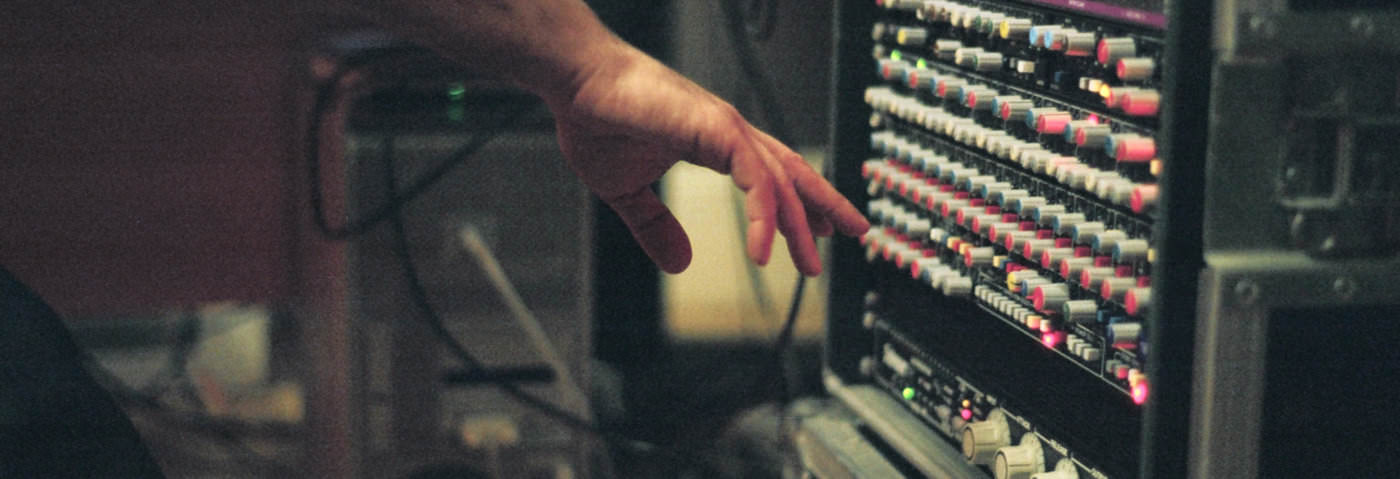In our latest drum programming and sound design tutorial, we look back to the 90s heyday of Parisian house.
Beat Dissected is a regular series in which we deconstruct drum patterns, showing you how to recreate them in any DAW. Just copy our grid in your own software to recreate the loop.
Here’s the beat we’re building today:
Audio Player
Spec
Tempo
120-128bpmSwing
60-65%Sounds
Mainly TR-909 samplesStep 1
For the kick in this beat we’ve selected a 909 sample and layered it with a 707 kick. The 707 kick is quieter in the mix than the 909, helping to give it a little more snap and punch. We’ve employed our usual trick of running the kick through an Akai MPC60 to take advantage of the gritty 12-bit sampler sound. As always, you can achieve similar results with a good bitcrusher such as D16 Decimort. The distinctive muffled tone of the kick comes from rolling off some of the top end with a low-pass filter and tweaking the envelope to give a deeper, more rounded sound.
A simple four-to-the-floor pattern works well for this beat. A single off-beat kick provides a turnaround variation at the end of the sequence.
Audio PlayerStep 2
Next, we add the snare pattern, playing on the second and fourth beat of each bar. We’ve chosen a simple 909 snare sample and added a little bit of reverb. The sound and pattern are quite generic here, but the point isn’t to define the character of the groove at this stage; all we’re doing is providing the backbone for the other elements.
Audio Player
Step 3
A little more character comes into the beat with the addition of the clap. The sound is again based on a 909 sample but we’ve layered it with a sample from a Boss DR-202. This is an approach which works well in any beat: take a very common sound and blend it with something a little more unusual. The result is a clap which sounds familiar but subtly different to the thousands of standard 909 claps you might have heard on house records before. We’ve heavily compressed the clap and added a little reverb to give it a really punchy and smashed sound.
Note also that the pattern of the clap follows the pattern of the snare but the timing is quite different; we’ve nudged the clap to the left of the grid to help bring out the punch of the attack transient and to lend more groove to the beat. The rushed timing of the clap pattern immediately adds character to the pattern.
Audio PlayerStep 4
We begin the more complex percussion parts with a shaker. We’ve chosen a sample from the classic Linn LM-1, which we’ve again processed, edited and run through the MPC for a little more grit and bite.
There are two main characteristics which make the shaker pattern interesting. First off, we use a very broad range of velocity variation throughout: note how the lower velocity notes (paler pink in the screenshot) are almost ghost hits. Secondly, we leave a lot of space around the second and fourth beats of each bar, which is where the snare and clap sit.
At this stage you can also adjust the level of swing to taste. Somewhere around the 60% setting is usually a good starting point for the heavily swung, jacking sound we’re looking for.
Audio Player
Step 5
Finally, we add the hi-hats. For this step we’ve bounced a loop down to audio rather than programming the individual samples along with the rest of the drums. The reason we’ve taken this approach is that the hi-hat loop includes effects which contribute hugely to the character of the beat. You can see in the screenshot below that the basic hi-hat pattern itself is very simple: a heavily swung rhythm with closed 909 hats on every 16th-note and open 909 hats on the offbeats.
What gives the loop its unusual groove and energy in the finished beat is the way that heavy phaser effects have been applied and then bounced down as audio. These have then been chopped and spliced back together to create a single continuous loop with different effects on successive sections. You could just apply a phaser to the entire hat pattern, but the effect wouldn’t be quite the same; it’s the regular, repetitive movement which defines the groove.
Audio PlayerTo add the extra punch found in so many French house tracks, heavy drum bus compression is appropriate for this beat. Anything from a smoother SSL-style compressor plugin to a dirty Alesis 3630 (or 3632) can work well to get the groove pumping.
While You’re Here…
If you like this article you might enjoy our book The Secrets of Dance Music Production. It is available from the Attack store!
New customer? Use code ATTACK10WELCOME at checkout for a 10% discount!







02.57 PM
Awesome! Thanks 🙂
08.22 PM
so fucking good. nice work guys. off to try that loop chopping trick now.
08.28 PM
Woah. Very Homework. I love this series. Any tips on French Touch bassline programming???
06.00 PM
n64, record/sample a bass guitar. The slap/transients is typical for french house. And of course heavy side chain compression on the bass, Alesis 3630 style ^^
06.59 PM
If you’r using a sampled loop, or any other, Be sure dat it ends with a pitch that goes up, or higer tone/note. Example ‘music sounds beter with you”..etc 🙂 It keeps listeners more/longer intrested in de music.
10.07 AM
I love French House THANKSSSS!!!!!
06.48 AM
How can I add bite and grit to my samples without an MPC or similar hardware ? Are there plugins that could achieve this ?
02.05 PM
Mike – we’re big fans of D16 Decimort for exactly that purpose.
http://www.d16.pl/index.php?menu=203
01.24 AM
This guy has made a GREAT french house kick and snare samplepack!
https://www.oronjo.com/p/iZBtaGr7kC4mJ93Pr